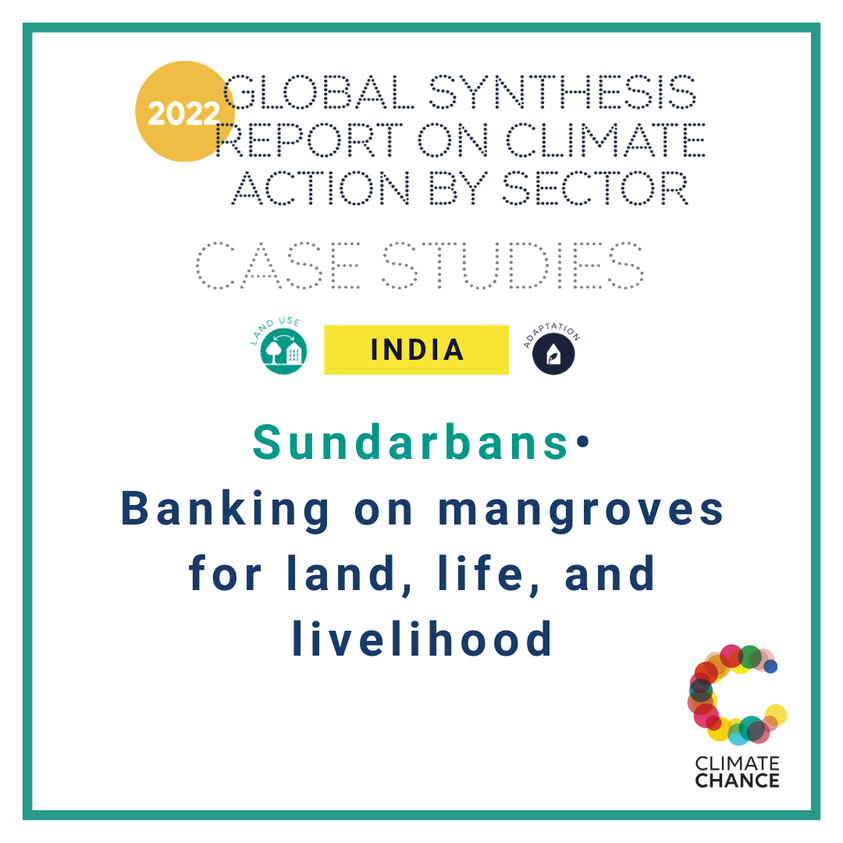Case Studies on Global Synthesis Report
09 - Feb - 2023
Join Climate Chance daily and discover 1 of 15 case studies from the Global Synthesis Report on Climate Action by Sector #BS2022. Each case study illustrates concrete public policies and projects that identify the most effective ways to reduce emissions, adapt to climate change, and archive the SDGs. Each analysis highlights remarkable initiatives from countries, cities, and regions, allowing us to identify, the most effective opportunities for moving towards a low-carbon society.
The Sundarbans are an archipelago of islands at the mouth of the Ganges, in eastern India and Bangladesh, and the world’s largest estuarine mangrove ecosystem. In the face of increasingly frequent and devastating flooding and storm surges, local communities in the state of West Bengal, in India, have taken the lead in afforesting embankments with mangroves, enabled by a local NGO, the Nature Environment and Wildlife Society (NEWS), channeling funding from the private sector and international non-profits. Along with its immense carbon sequestration potential, these mangroves are also home to the Bengal tiger, and species of rare snakes, fish, and crustaceans – all of which have benefitted from the afforestation programme.
Find more information and key figures:
Read the full report and its summary:
